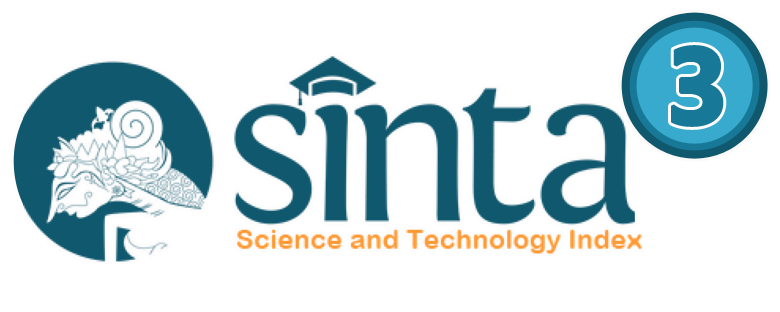Perbedaan Persepsi Generasi X & Y Atas E-Filing
DOI:
https://doi.org/10.35838/jrap.2019.006.01.11Keywords:
company value, liquidity leverage, activity, profitability, dividend PolicyAbstract
ABSTRACT
E-filing usage as a means of tax obligation fulfillment is a convenient service provided by the government, specifically the Directorate General of Taxes. But in reality, e-filing usage is not considered optimal, especially at this time when most of the Y generation who can be said to be accustomed and able to use technology have become taxpayers. So, this research aims to analyze the perceptions of Y generation by comparing the perceptions of X generation to e-filing usage as a means of tax obligations fulfillment. This research uses primary data obtained directly from individual taxpayers in Salatiga city who use e-filing. The method of this research are descriptive statistics and Mann Whitney U test. The research shows that there are differences perception between X and Y generations to e-filing usage as a means of tax obligations fulfillment. Where the most of Y generations is easier, shows their positive attitude and has no difficulty in using e-filing compared to X generations. But both generations show their satisfaction tend to be the same towards the use of e-filing as a means of tax obligation fulfillment.
ABSTRAK
Penggunaan e-filing sebagai sarana pemenuhan kewajiban perpajakan, merupakan bentuk fasilitas dan kemudahan yang diberikan Pemerintah dalam hal ini Direktorat Jendral Pajak. Namun pada kenyatannya penggunaan e-filing dinilai belum optimal, terlebih pada saat ini sebagian besar Generasi Y yang dapat dikatakan terbiasa dan mampu menggunakan teknologi sudah menjadi Wajib Pajak. Sehingga, penelitian ini bertujuan untuk menganalisis persepsi generasi Y dengan membandingkan persepsi generasi X terhadap penggunaan e-fiing sebagai sarana pemenuhan kewajiban perpajakan. Penelitian ini menggunakan data primer yang diperoleh langsung dari Wajib Pajak orang pribadi di kota Salatiga yang menggunakan e-filing. Desain penelitian yang digunakan ialah statistik deskriptif dan uji beda. Hasil penelitian menunjukkan bahwa terdapat perbedaan persepsi antara generasi X dan Y terhadap penggunaan e-filing sebagai sarana pemenuhan kewajiban. Dimana sebagian besar generasi Y lebih mudah, menunjukkan sikap positif dan tidak mengalami kesulitan dalam menggunakan e-filing dibandingkan dengan generasi X. Namun baik generasi X dan Y menunjukkan kepuasan mereka yang cenderung sama terhadap penggunaan e-filing sebagai sarana pemenuhan kewajiban perpajakan.
JEL Classification: M41, F38
Downloads
References
Ahmed, S. A. (2017) ‘Practical application of anti-money laundering requirements in Bangladesh’, Journal of Money Laundering Control, 20(4), pp. 428–450.
Ahmar, N, (2018), The Role of Public Accountant on The Success of Tax amnesty in Financial Institution and Banking, International Seminar and Call for Paper on Accounting and Society, Jakarta,
Alfiyah, N. and Latifah, S. W. (2017) ‘Pengaruh Pelaksanaan Kebijakan Sunset Policy , Tax amnesty , Kepatuhan Wajib Pajak’, 7(2), pp. 1081–1090.
Alm, J., Martinez-vazquez, J. and Wallace, S. (2009) ‘Do Tax Amnesties Work ? The Revenue Effects of Tax Amnesties During the Transition in the Russian Federation’, Economic Analysis and Policy. Elsevier Masson SAS, 39(2), pp. 235–253.
Asmorojati, W., Diana, N. and Afifudin (2016) ‘Reaksi Investor Terhadap Pengumuman Kebijakan Tax amnesty Pada Tanggal 1 Juli 2016’, e-Jurnal Ilmiah Riset Akuntansi, 2016(2), pp. 27–41
Bayer, R., Oberhofer, H. and Winner, H. (2015) ‘The occurrence of tax amnesties : Theory and evidence ☆’, Journal of Public Economics. Elsevier B.V., 125, pp. 70–82.
Bose, P. and Jetter, M. (2012) ‘Liberalization and tax amnesty in a developing economy”, Economic Modelling. Elsevier B.V., 29(3), pp. 761–765.
Cummings, R. G. et al. (2009) ‘Tax morale affects tax compliance: Evidence from surveys and an artefactual field experiment’, Journal of Economic Behavior and Organization, 70(3), pp. 447–457
Cyan, M. R., Koumpias, A. M. and Martinez-Vazquez, J. (2016) ‘The determinants of tax morale in Pakistan’, Journal of Asian Economics. Elsevier Inc., 47, pp. 23–34. Faculty, M. T. (2017) ‘TAX AMNESTY FOR SOCIAL CONTRIBUTION IN ROMANIAN’, (11), pp. 190–197.
Farrar, J. and Hausserman, C. (2016) ‘An Exploratory Investigation of Extrinsic and Intrinsic Motivations in Tax amnesty Decision-Making’, Journal of Tax Administration, 2(22), pp. 47–66. Available at: http://pdxscholar.library.pdx.edu/busadmin_fac.
Garz, M. and Pagels, V. (2017) ‘Cautionary Tales: Celebrities, the News Media, and Participation in Tax Amnesties’, pp. 1–40.
Ibrahim, M. A. et al. (2017) ‘A Systematic Literature Review on Tax amnesty in 9 Asian Countries’, International Journal of Economics and Financial Issues, 7(3), pp. 220–225.
Marchese, C. (2014) ‘Tax Amnesties’, (March), p. 19. Available at: http://www.iel.carloalberto.org/Research-and-Pubblication/Working-papers.aspx.
Nar, M. (2015) ‘The effects of behavioral economics on tax amnesty’, International Journal of Economics and Financial Issues, 5(2), pp. 580–589.
Panico, P. (2010) ‘An appraisal of trusts under the Italian tax amnesty’, E Biling, 16(4), pp. 247–249. doi: 10.1093/tandt/ttq017.
Puspita, L. and Karyadi, F. (2016) ‘Indonesia : New Tax amnesty Law and Real Estate Investment Funds in Indonesia’, International Tax Review, Juli, 12, pp. 2016–2018.
Ragimun (2013) ‘Analisis Implementasi Pengampunan Pajak (Tax amnesty) Di Indonesia’, International Tax Review, (122), pp. 2016–2018.
Santoso, U. and Setiawan, J. M. (2009) ‘Tax amnesty’, Sosiohumaniora, 11(2), pp. 111–125.
Sari, V. A. Permata and Fidiana, F. (2017) ‘Pengaruh Tax amnesty , Pengetahuan Perpajakan , Dan Pelayanan Fiskus Terhadap Kepatuhan Wajib Pajak’, Perpajakan, 6, pp. 745–760.
Setyaningsih, T. and Okfitasari, A. (2016) ‘Mengapa Wajib Pajak Mengikuti Tax amnesty (Studi Kasus Di Solo)’, Ekuitas: Jurnal Ekonomi dan Keuangan, 20(4), pp. 415–433.
Shevlin, T., Thornock, J. and Williams, B. (2017) ‘An examination of firms’ responses to tax forgiveness’, Review of Accounting Studies, 22(2), pp. 577–607. Suyanto, S. and Putri, I. S. (2017) ‘Pengaruh Persepsi Wajib Pajak Tentang Kebijakan Tax amnesty (Pengampunan Pajak), Dan Motivasi Membayar Pajak Terhadap Kepatuhan Perpajakan’, Jurnal Akuntansi, 5(1), p. 49.
Wang, Y. and Hsieh, W. (2015) ‘Is Tax amnesty Good for the Tax Evader?’, British Journal of Economics, Management & Trade, 6(4), pp.
Waris, A. and Abdul Latif, L. (2014) ‘The effect of tax amnesty on anti-money laundering in Bangladesh’, Journal of Money Laundering Control, 17(2), pp. 243–255.
Wibowo, A. and Darmanto, S. (2017) ‘Reaction of Indonesian Capital Market Investors to the Implementation of Tax amnesty’, Jurnal Keuangan dan Perbankan, 21(40), pp. 597–608
Yasa, I. N. P. and Mandala, I. P. W. (2016) ‘Tax amnesty dan Implementasinya ( Sebuah Pendekatan Eksploratif )’, 1(1), pp. 40–49
Downloads
Published
Issue
Section
License
Authors who publish with this journal agree to the following terms:
- Authors retain copyright and grant the journal right of first publication with the work simultaneously licensed under a Creative Commons Attribution-ShareAlike 4.0 International License that allows others to share the work with an acknowledgement of the works authorship and initial publication in this journal.
- Authors are able to enter into separate, additional contractual arrangements for the non-exclusive distribution of the journals published version of the work (e.g., post it to an institutional repository or publish it in a book), with an acknowledgement of its initial publication in this journal.
- Authors are permitted and encouraged to post their work online (e.g., in institutional repositories or on their website) prior to and during the submission process, as it can lead to productive exchanges, as well as earlier and greater citation of published work (See The Effect of Open Access).














